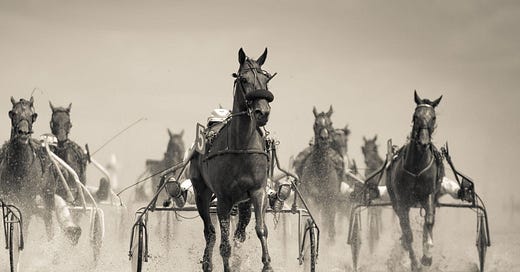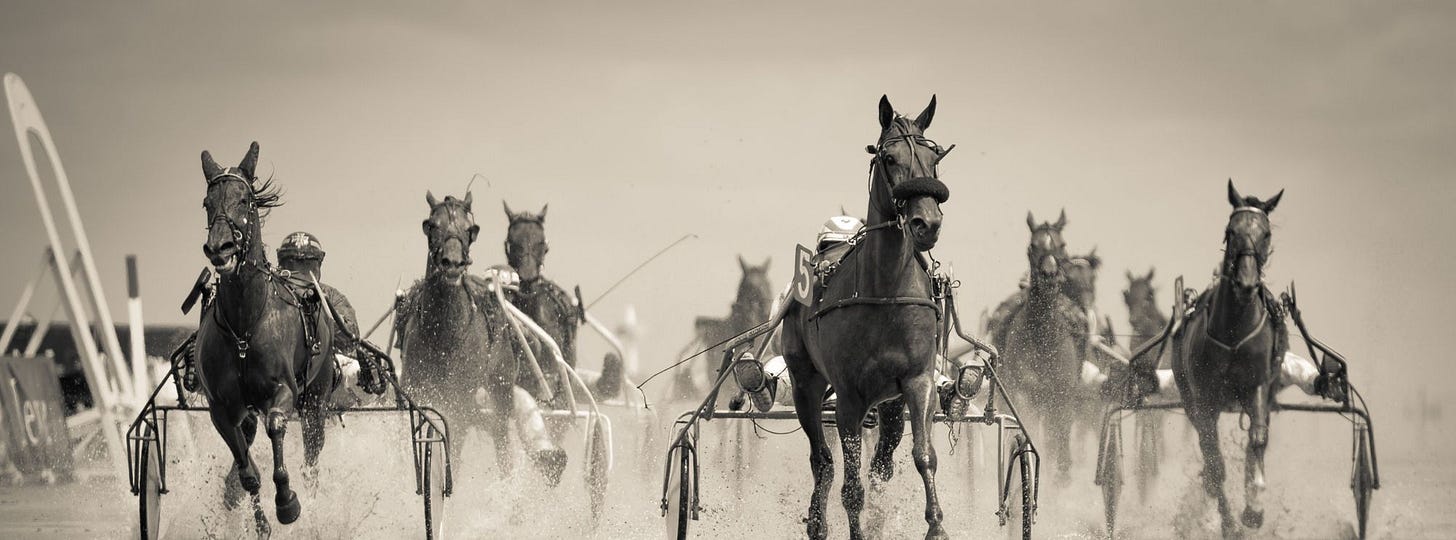I recently read an article about the Nika riots of Constantinople that annoyed me so much I wrote an entire short story rebutting it. I try not to rip wholesale from history, though, so I decided I wanted to come up with a new kind of race. First, I needed to understand the different kinds of races that happened in history...
Quick Facts
Gaius Appuleius Diocles survived a 24-year career of chariot racing in Rome, and won 1,462 races. He may have been the richest athlete ever.
Mongolian race horses are ridden by 7 to 13 year old girls and boys without saddles.
The word "stadium" comes from the Greek stade, a unit of measure based off of the length of a Greek footrace (roughly 180m/600ft).
Some racehorses respond an approaching competitor by putting on a burst of speed, while others fade back to last once another horse starts to beat them.
The chariot racing scene from Ben-Hur (1959) is often the only part of that movie people have ever seen.
Racing Riots
In Byzantium during Justinian's rule, chariot racing was highly factional and politically powerful — and evoked a fair amount of localized violence, roughly on order with a college town might see after a big football game. Justinian spent a big chunk of his co-emperor days trying to crack down on faction-related rioting. The Nika riot in Constantinople, which kicked off because a couple of racing fans got arrested for "disturbances" and were going to be hanged; the rioters wanted them released, among other things.
Foot Race
Male Inca ran long-distance footraces during their puberty rites, which were held in December. The top ten got special clothes and earned bragging rights for life. The bottom ten also had to wear special clothes, to shame them for their failure. Note that "Inca" here refers to the elite class, not all the inhabitants of the Andes region.
Keep reading with a 7-day free trial
Subscribe to Manuscriptions to keep reading this post and get 7 days of free access to the full post archives.



